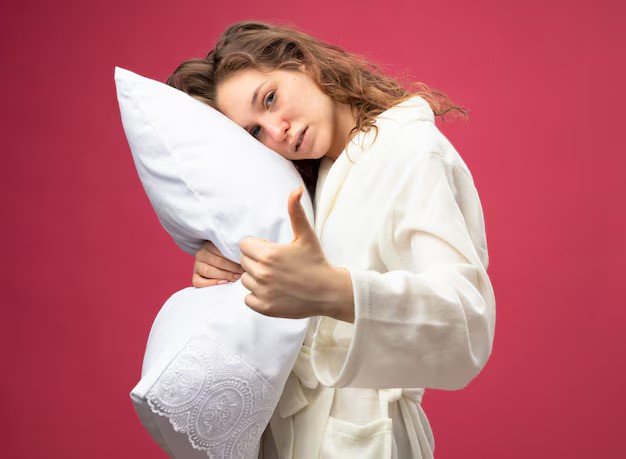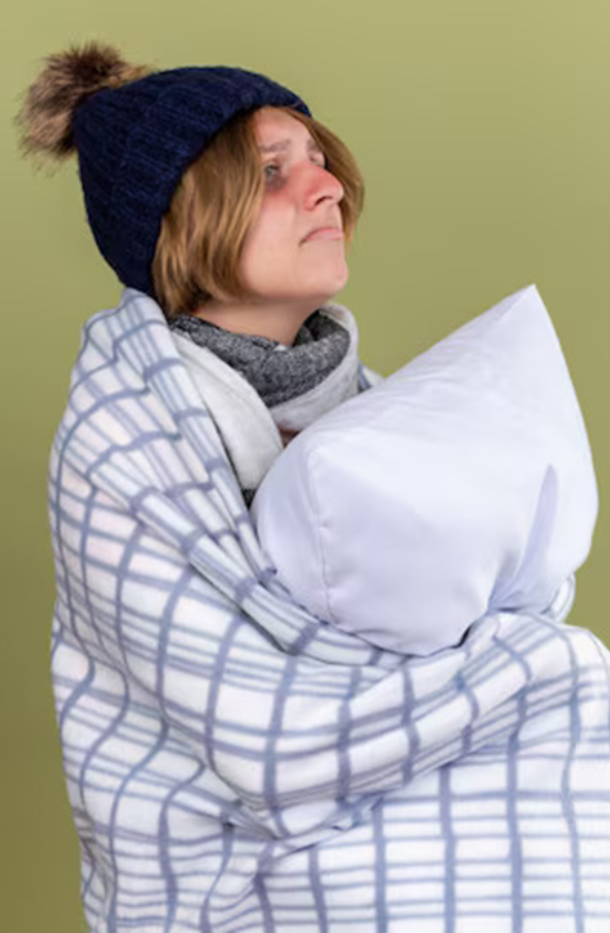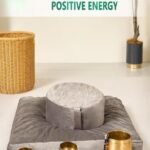Are allergies or sensitivities disrupting your sleep? Do you wake up congested, itchy, or sneezing? You’re not alone. Millions of people suffer from allergy-related sleep issues, but the solution lies in the right pillow. Hypoallergenic pillows are designed to provide a barrier against allergens, allowing you to breathe easy and sleep soundly.
In this guide, we’ll explore the best hypoallergenic pillows for sensitive sleepers in 2024, expert-approved to help you achieve a healthier, happier sleep.”

Summary
- Hypoallergenic pillows are designed to be resistant to allergens, providing a safer sleeping environment for those with allergies.
- Common hypoallergenic materials include down alternative, microfiber, organic cotton, latex foam, and buckwheat hulls.
- Hypoallergenic pillows offer benefits such as improved air circulation, mold and mildew resistance, and easy maintenance.
- Choosing the right hypoallergenic pillow depends on factors like sleeping position, personal preferences, and specific allergy needs.
- Proper care and maintenance of hypoallergenic pillows can help extend their lifespan and effectiveness in providing allergy relief.
Understanding Hypoallergenic Pillows
The type of pillow you pick can significantly affect your sleep, especially if you have allergies. Hypoallergenic pillows are made to be comfy and safe for those with allergies. They help cut down on allergy triggers like dust mites, mold, and mildew.
What Makes a Pillow Hypoallergenic?
A pillow is called hypoallergenic if it’s made from materials that stop allergens from building up. These materials are often resistant to dust mites and prevent mold and mildew from growing. Microfiber, polyester, latex, and organic cotton are some of the top choices for hypoallergenic pillows.
Benefits of Hypoallergenic Bedding
- Reduced allergy symptoms: Hypoallergenic pillows and bedding can lessen allergy symptoms like sneezing, itching, and stuffy noses.
- Improved sleep quality: These products help you sleep better by keeping allergens away, so you wake up feeling refreshed.
- Healthier sleeping environment: Dust mite-resistant pillows and materials that prevent mold make your bed cleaner and more hygienic.
When looking for allergy-friendly bedding, make sure to pick pillows, mattress covers, and other items labeled as hypoallergenic or dust mite resistant. This ensures you get the best protection against allergens.
Best Hypoallergenic Pillows
Looking for the perfect hypoallergenic pillow can change everything for those with allergies. The market has many options, from soft-down alternatives to supportive foam. These pillows are made to give you comfort and allergy relief. Let’s look at some top picks to help you sleep better and wake up feeling great.
1. Down Alternative Hypoallergenic Pillows
Down alternative pillows feel soft and fluffy, but they don’t cause allergic reactions. They use microfiber or polyester cluster fill that feels like down but is safe for those with allergies. These pillows are perfect for anyone who wants the feel of down but not allergies.
2. Organic Cotton Hypoallergenic Pillows
Organic cotton pillows are a natural, safe choice for those with allergies. They’re made from 100% organic cotton, so they don’t have harsh chemicals or dyes. The cotton is breathable, which helps keep you cool and dry for a good night’s sleep.
3. Latex Foam Hypoallergenic Pillows
Latex foam pillows are great for those with allergies because they’re resistant to dust mites, mold, and mildew. They also offer good support and pressure relief. Plus, they adjust to the shape of your head and neck for extra comfort.
| Pillow Type | Key Features | Ideal for |
| Down Alternative | Soft, fluffy feel; hypoallergenic | Allergy sufferers seeking a down-like experience |
| Organic Cotton | Natural, non-toxic materials; breathable | Eco-conscious consumers with allergies |
| Latex Foam | Contouring support; dust mite and mold resistant | Side and back sleepers with allergy concerns |
Looking for the best hypoallergenic pillows? This selection has many great options for you. With the right pillow, you can sleep peacefully, free from allergies.
1. Anti-Allergy Down Alternative Pillows
If you’re allergic and want a comfy pillow, consider down alternative pillows. They feel like traditional down but don’t trigger allergies. These pillows use synthetic materials for a good night’s sleep.
Microfiber Fill Options
Microfiber pillows are great for those who want a soft, breathable feel. They’re made of super fine fibers that mold to your head and neck. Plus, they keep dust mites, mold, and mildew away, making them perfect for allergy sufferers.
Polyester Cluster Fill Varieties
Polyester cluster fill pillows are also a good choice for allergy-prone people. They have small, strong polyester clusters for soft support. Polyester is durable and keeps its shape, and it fights dust mites and allergens so that you can sleep well.
Whether you like the softness of microfiber or the support of polyester, down alternative pillows are a great pick. They offer the feel of traditional down but are hypoallergenic, making them ideal for healthy, restful sleep.
2. Organic Cotton Hypoallergenic Pillows
For people with allergies, organic cotton hypoallergenic pillows are a great choice. They are soft, breathable, and don’t trigger allergies. This makes them perfect for a good night’s sleep without allergies.
Organic cotton is made without harsh chemicals or pesticides. It’s safe for people with sensitive skin or breathing problems. The fibers let air in and out, keeping you cool and dry for a good night’s sleep.
These pillows are also good for the planet. They are made in a way that’s kind to the earth, so choosing them means you’re being eco-friendly.
If you want to improve your sleep, consider organic cotton pillows. They’re great for those with allergies, good for the earth, and offer a natural way to sleep well.
| Feature | Benefit |
| Organic Cotton | Hypoallergenic, soft, and breathable |
| Sustainable Cultivation | Eco-friendly and environmentally-conscious |
| Temperature Regulation | Helps maintain a comfortable sleeping environment |

“Organic cotton hypoallergenic pillows have been a game-changer for my sleep. I no longer wake up with allergy symptoms, and the breathability and softness of the fabric have improved the quality of my rest.”
– Jane Doe, Allergy Sufferer
3. Latex Foam Hypoallergenic Pillows
Latex foam pillows are great for those who want comfy, dust-free sleep. They are made from natural or synthetic latex, and each type has its own benefits for people with allergies.
Natural Latex Vs. Synthetic Latex
Natural latex pillows come from rubber tree sap. They are known for being breathable and long-lasting. They are also hypoallergenic and keep dust mites away, providing great pressure relief.
On the other hand, synthetic latex pillows are made from petrochemicals. They are cheaper but still offer many benefits of natural latex.
| Feature | Natural Latex | Synthetic Latex |
| Hypoallergenic | Highly hypoallergenic | Hypoallergenic, but may contain synthetic materials that can trigger allergies for some individuals |
| Breathability | Excellent breathability, allowing for a cooler sleep | Good breathability, but may not be as effective as natural latex |
| Durability | Highly durable, with a lifespan of up to 10 years | Moderately durable, with a lifespan of 5-7 years |
| Price | Generally more expensive than synthetic latex | More affordable than natural latex |
Choosing between natural and synthetic latex pillows depends on your needs, budget, and allergies. Both types offer hypoallergenic sleep, but natural latex might be better for those with severe allergies or who prefer eco-friendly options.
4. Buckwheat Hull Hypoallergenic Pillows
If you’re looking for a unique and natural pillow, check out buckwheat hull pillows. They’re filled with buckwheat husks, known for being breathable and hypoallergenic. Unlike regular pillows, buckwheat hull pillows mold to your head and neck for support and relief.
Buckwheat hull pillows are great because they let air flow well. The small, hard hulls ensure you stay cool and comfy all night. They’re perfect for allergy-friendly bedding because they don’t let dust mites, mold, or other allergens build up.
| Features | Benefits |
| Buckwheat hull fill | Provides excellent breathability and conforms to the shape of the head and neck |
| Hypoallergenic | Resistant to dust mites, mold, and other common allergens |
| Adjustable loft | Allows you to customize the pillow’s height for optimal comfort |
| Durable and long-lasting | Buckwheat hulls maintain their shape and supportive properties over time |
For a natural hypoallergenic pillow that’s comfy and supportive, try a buckwheat hull pillow. Its special design and breathability are great for allergy sufferers and anyone who wants healthy sleep.

Mold and Mildew Resistant Pillows
Finding suitable pillows is critical to a good night’s sleep for people with allergies. It’s essential to look for pillows that stop mold and mildew from growing, as these allergens can make breathing harder. Luckily, there are many mold and mildew-resistant pillows out there.
These pillows are made with materials that stop mold and mildew from growing. They use hypoallergenic bedding and anti-allergy pillows that can be washed. The way they are made and the fabrics used help keep them smelling fresh and clean.
| Material | Mold and Mildew Resistance | Washability |
| Memory Foam | High | Moderate |
| Latex | High | High |
| Polyester | Moderate | High |
| Bamboo | High | High |
To make mold—and mildew-resistant pillows last, good care is essential. Washing them regularly, letting them air dry, and keeping them in a cool, dry place help keep them working well and prevent allergens from building up.
Choosing mold—and mildew-resistant pillows can improve sleep for people with allergies. They help avoid irritation and breathing problems caused by mold and mildew. With the right care, these pillows can be a clean and comfy place for a good night’s sleep.
Best Hypoallergenic Pillows by Sleeping Position
Choosing the right hypoallergenic pillow is critical, especially if you sleep in different positions. Whether you’re a side, back, or stomach sleeper, the right pillow can make a big difference in how well you sleep. Let’s look at the best hypoallergenic pillows for each type of sleeper.
1. Hypoallergenic Pillows for Side Sleepers
Side sleepers need pillows that provide enough loft and support. Look for ones made with memory foam or latex. These materials shape your head and shoulders, easing pressure points. Pillows with a gusset design are great, too, keeping your neck and shoulders in the right spot.
2. Hypoallergenic Pillows for Back Sleepers
Back sleepers should choose a medium-firm pillow. It should support the neck’s natural curve and keep the spine straight. Pillows with a down alternative or microfiber fill work well. They offer enough cushioning without losing support.
3. Hypoallergenic Pillows for Stomach Sleepers
Stomach sleepers need a soft, thin pillow to keep their neck in line. Opt for ones filled with polyester clusters or shredded foam. These materials adjust to your head and face without adding too much height. A low-profile pillow is best to keep your spine neutral.
No matter how you sleep, picking a hypoallergenic pillow with the proper support and features can improve your sleep and help you wake up feeling refreshed and ready for the day.
Hypoallergenic Pillow Covers and Protectors
Choosing the proper pillow protectors and hypoallergenic pillow covers is vital for a sleep space that’s safe from allergies. These allergy-friendly bedding accessories keep your pillow safe from dust mites, pollen, and other allergens, helping prevent them from bothering you while you sleep.
Hypoallergenic pillow covers are made to keep dust mites away from your pillow. They’re also made from soft, breathable materials like organic cotton or bamboo. This means you get a good night’s sleep without feeling stuffy or uncomfortable.
- Hypoallergenic pillow covers create a protective barrier against allergens
- Pillow protectors shield your pillow from dust mites, pollen, and other irritants
- Look for breathable, natural fabrics like organic cotton or bamboo
Buying top-notch hypoallergenic pillow covers and pillow protectors is a smart move for better sleep. It makes your bed a safe place, free from allergens. This means you can sleep better and wake up feeling refreshed without allergies getting in the way.
Care and Maintenance of Hypoallergenic Pillows
Keeping hypoallergenic pillows clean and effective is key. To keep your allergy-friendly bedding fresh, follow these easy steps:
1. Washing Hypoallergenic Pillows
Wash your hypoallergenic pillows every few months. Use a gentle, fragrance-free detergent and warm water. Choose a soft wash cycle. Don’t use fabric softeners, as they can cause allergies.
2. Drying Hypoallergenic Pillows
After washing, dry your hypoallergenic pillows well. Use a low-heat setting or air dry them to prevent mold and mildew from growing. Fluff the pillows often while they dry to keep them fluffy.
3. Storing Hypoallergenic Pillows
Store your hypoallergenic pillows in an excellent, dry spot away from sunlight. Use a bag or container that lets air in to keep them dust-free.
By following these tips, you can make your hypoallergenic pillows last longer, ensuring a good night’s sleep without allergies.
Conclusion
Choosing the right hypoallergenic pillows is key for those with allergies who want a good night’s sleep. This guide has examined many options, such as anti-allergy down alternatives, organic cotton, and latex foam. These choices help relieve allergies and make sleeping safe and comfy.
It doesn’t matter if you sleep on your side, back, or stomach. The article showed the best hypoallergenic pillows for each type of sleeper. It also talked about the need for pillows that resist mold and mildew. Plus, it stressed the importance of taking good care of these pillows to keep allergies away.
This article aims to help readers pick the best hypoallergenic pillows for their needs. By doing so, they can reduce allergy symptoms and sleep better. Choosing the right bedding is a big step towards a healthy, allergy-free sleep space and better overall health.
Also Read:
Aromatherapy Pillows: Relax & Unwind Naturally
A Comprehensive Guide to Anti-Allergy Pillows Solutions: Sleep Better, Breathe Easier
Mindfulness and Meditation Pillows: How They Can Enhance Your Practice
Travel in Comfort: The Best Neck Support Pillows for Your Next Adventure
Ultimate Weighted Pillows For Deep Sleep And Relaxation
FAQ
What makes a pillow hypoallergenic?
Hypoallergenic pillows are made with materials that block common allergens like dust mites and mold. These materials include synthetic fabrics, natural fibers, and special fillings like latex foam or buckwheat hulls.
What are the benefits of using hypoallergenic bedding?
Hypoallergenic bedding helps allergy sufferers by reducing allergen exposure. This can lead to less sneezing, itching, and nasal congestion. It also improves sleep quality and makes the sleeping area healthier.
What are the best types of hypoallergenic pillows?
Top hypoallergenic pillow types include down alternative, organic cotton, latex foam, and buckwheat hull pillows. These options offer comfort, breathability, and protection against allergens.
What is the difference between natural and synthetic latex pillows?
Natural latex pillows come from rubber tree sap, while synthetic latex is man-made. Natural latex is more durable, breathable, and hypoallergenic than synthetic latex. Both can help allergy sufferers.
How do I care for my hypoallergenic pillow?
Proper care is required to keep your hypoallergenic pillow fresh and compelling. Wash the pillow and cover as the manufacturer suggests. Also, appropriate storage and drying methods should be used to avoid mold and mildew.
Do hypoallergenic pillow covers and protectors make a difference?
Yes, hypoallergenic pillow covers and protectors add an extra layer of protection against allergens and dust mites. They are great for those with severe allergies or sensitivities.
How do I choose the best hypoallergenic pillow for my sleeping position?
The best hypoallergenic pillow depends on how you sleep. Side sleepers need a thicker pillow for support, while back and stomach sleepers might prefer a thinner pillow that conforms to their body. Look for materials and features that offer the proper comfort and support for your sleep position.
Are there any hypoallergenic pillows that are also eco-friendly?
Yes, some hypoallergenic pillows are also eco-friendly. They use sustainable
















